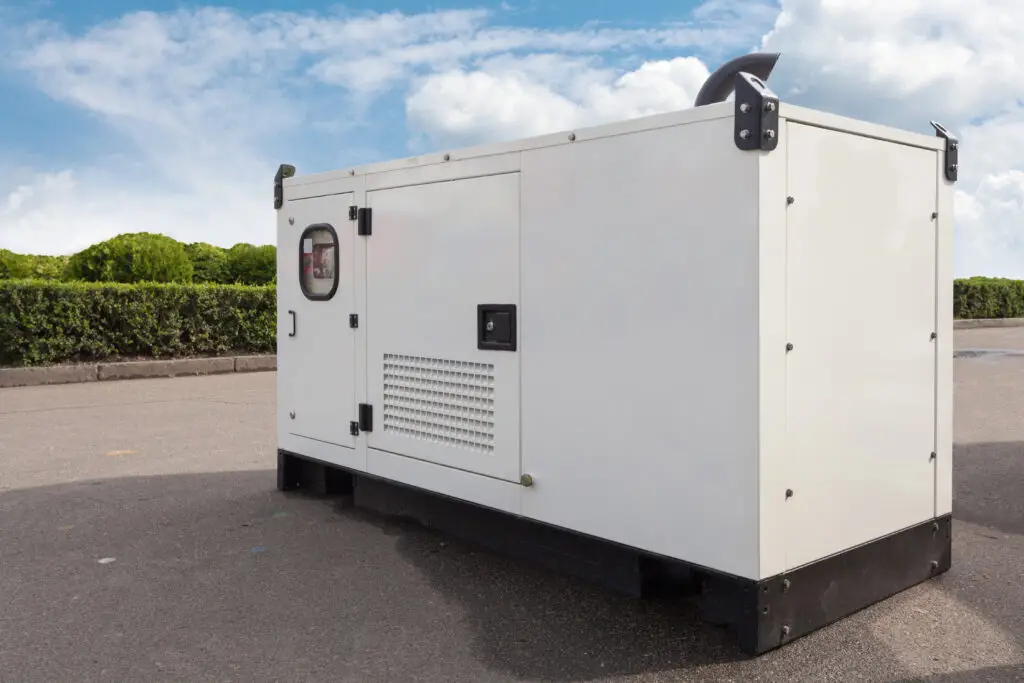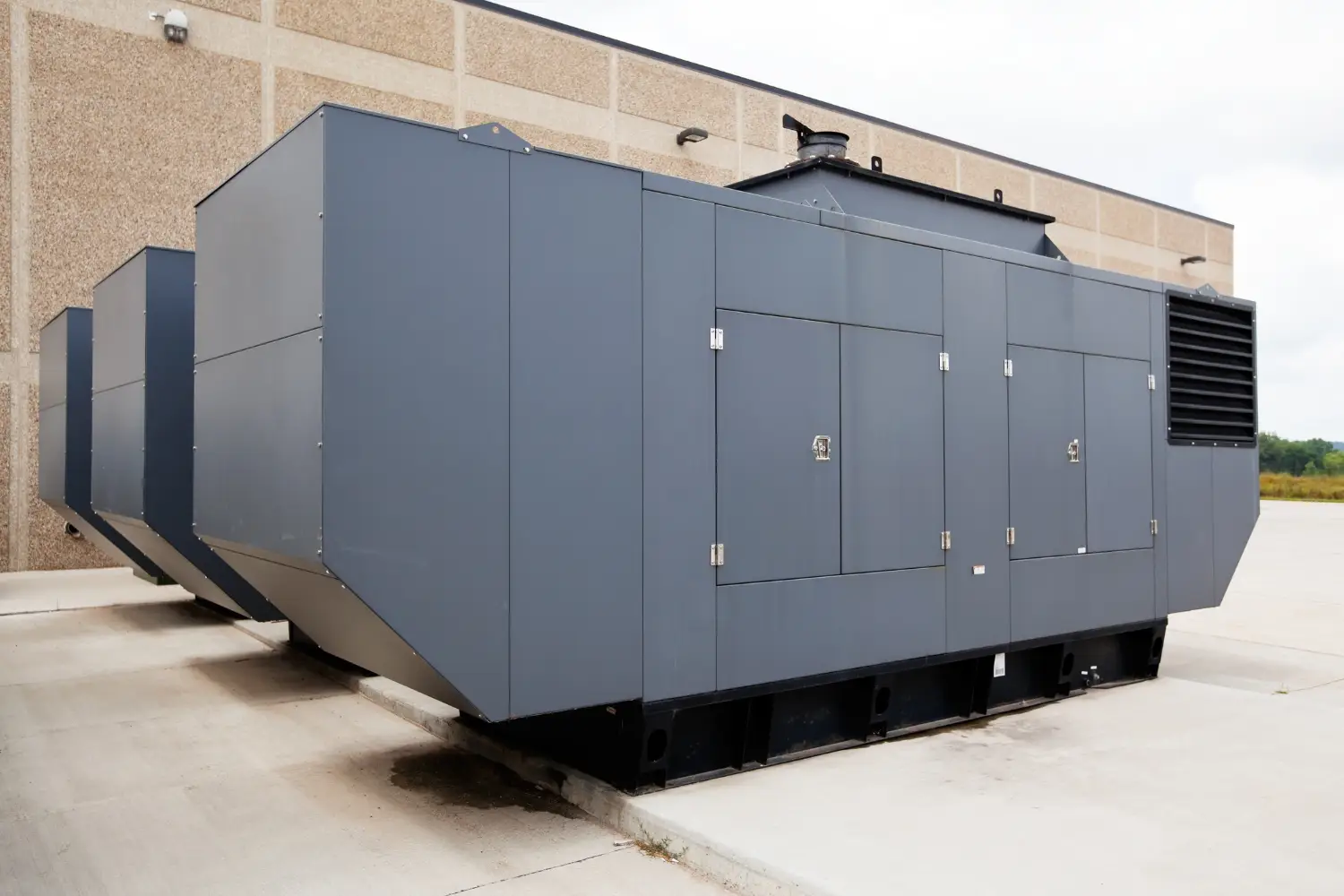Generators for Data Centers: Technical Requirements and Key Standards
Power and Reliability Requirements
Reserve Capacity and Redundancy (N+1, N+2)
In data centers, the N+1 logic requires one additional generator beyond projected demand, ensuring that even with a failure, the full critical load is maintained. N+2 configurations allow simultaneous maintenance without service interruption.
Voltage Stability
The Automatic Voltage Regulator (AVR) must keep voltage within ±1% even under dynamic load variations to avoid server rack resets and synchronization failures.
AVR Criteria
Microprocessor-based AVRs adjust within milliseconds and support highly non-linear loads (e.g., UPS rectifiers, battery banks) with waveform distortion under 3%.
Fuel Types and Efficiency
Diesel vs. Natural Gas
Diesel generators are standard due to high energy density and global availability. However, where piped gas is accessible, natural gas reduces particulate emissions by up to 90% and NOₓ by 50%.
Dual-Fuel and Hybrid Systems
Dual-fuel systems ignite with diesel and sustain combustion with gas, reducing oil consumption by up to 30%. Hybrid systems may integrate solar panels for non-critical daytime loads.
Integration with UPS and Battery Infrastructure
Short Transfer Time
The Automatic Transfer Switch (ATS) must switch from grid to generator in under 10 ms—within the tolerance of double-conversion online UPS systems.
ATS Requirements
Dry contacts and internal redundancy in ATS ensure multiple switch cycles without premature wear, crucial during utility micro-outages.
Battery System Coexistence
Generators must synchronize with battery backups, enabling critical loads to transition seamlessly without destabilizing distribution lines.
Standards and Compliance
Uptime Institute Tier Ratings
Tier III and IV require failure-tolerant generation (N+1 or 2N) and uninterrupted maintenance. Tier IV demands 99.995% annual availability, requiring redundant generators and fuel polishing systems.
Generator Implications
Tier IV designs include hot-swap maintenance of alternators and ATS, isolated fuel lines, and automated shutoff valves.
ABNT, ANSI/IEEE, and IEC Standards
Brazilian compliance follows ABNT NBR 5386 (transformers), NBR 5460 (electrical installations), ANSI/IEEE 1547 (interconnection), and IEC 60034 (rotating machines).
Key Standards References
IEEE 519: harmonic distortion limits
IEC 61000-4-30: power quality monitoring
NFPA 110: emergency system requirements
Installation and Maintenance
Fuel Line and Tank Sizing
Internal tanks must provide 24-hour full-load autonomy and include fuel polishing to remove water/sediment. Lines must be sized to avoid pump cavitation.
Fueling and Safety Requirements
Quick shutoff valves, leak detectors, and berm systems ensure environmental compliance and clean operations.
Periodic Load Testing
Monthly tests with resistive or electronic load banks (at least 2 hours) must validate performance under 30–50% and 100% loads with fuel/temperature curves.
Testing Procedures
Gradual load ramping (10% to 100% in 10 minutes) prevents thermal shocks. Vibration and ultrasonic analysis detect bearing wear.
Monitoring and Automation
SCADA and BMS Integration
Generators must interface via Modbus TCP/IP or IEC 61850 with Building Management Systems for alarms, trends, and predictive maintenance triggers.
Protocols and Interfaces
Redundant gateways and dedicated VLANs separate control traffic from critical data, ensuring low-latency and network reliability.
Condition Monitoring and Predictive Maintenance
IoT sensors measure vibration, oil/fuel temperature, and anomalies. Machine Learning algorithms predict filter changes or injection adjustments up to 30 days ahead.
Grounding and Safety
Grounding and Equipotential Systems
Ground meshes with resistance under 5 Ω and copper rods prevent faults and reduce touch potential. Equipotential bonding avoids arc flashes.
Ground Resistance Testing
Biannual fall-of-potential tests confirm integrity; continuous monitoring detects corrosion.
Lightning Protection
Tall buildings must use SPDA (Lightning Protection System) with capture rods, down conductors, and dedicated grounding to prevent surges from affecting generators.
Best Practices
Selecting and operating generators in data centers requires strict attention to redundancy (N+1, N+2), power quality, and compliance with global and local standards. Integration with UPS, ATS, BMS, cleaner fuels, and predictive maintenance strategies ensures high availability (Tier III/IV) and operational safety. Real-time monitoring and sustainable practices improve reliability and reduce long-term costs.
Need help? Contact a specialized manufacturer like Geraforte, with over 16 years in the generator market. Our team of engineers and experts is ready to assist with tailored projects for your data center or telecom company.
Discover our products.





